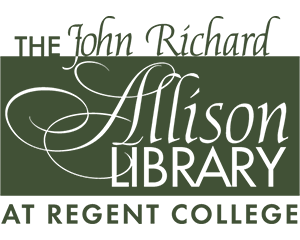The official tip sheet for Turabian style citation can be found here. We also strongly recommend using a copy of the Manual for Writers which is more comprehensive and covers all types of source material.
Please note that while the Turabian guide does allow for endnotes (citations collected together at the end of your paper), the norm at Regent is footnotes (citations at the bottom of the page throughout your paper).
The marker for a footnote is always placed immediately following the closing quotation mark OR at the end of a sentence in which you’ve integrated the quote into your own phrasing, such as this:
Moses also exhorts God to “remember Abraham, Isaac, and Israel” when He is about to destroy the Israelities for worshipping the golden calf (Ex. 32:13).5
(For clarity, in the paper this example is taken from, the author quoted the Bible and so provided a parenthetical reference, but then needed to cite a scholar's commentary in the footnote for the insight they received from that source.)
A footnote itself is always in the same font as the rest of your paper (Times New Roman), but at 11pt rather than 12pt. The first line is always indented in Turabian formatting, with the rest of the lines flush with the margin, just like a paragraph. If you want, the indent can be less than it would be for a paragraph, but it must still be clearly indented.
The bibliography appears at the end of your paper starting on its own page, in the same Times New Roman 12pt font of your paper. Make sure to title it ‘Bibliography’. Each entry is arranged by alphabetical order according to author's last name. The first line of each entry is flush with the margin, and every line after is indented.
Turabian’s examples, as well as those offered here, show the formatting for both a footnote (marked with F) and a bibliography entry (marked with B).
Books with a Single Author
F: Cynthia Long Westfall, Paul and Gender: Reclaiming the Apostle's Vision for Men and Women in Christ (Grand Rapids: Baker Academic, 2016), 80.
B: Westfall, Cynthia Long. Paul and Gender: Reclaiming the Apostle's Vision for Men and Women in Christ. Grand Rapids: Baker Academic, 2016.
Books with Multiple Authors
F: Milton J. Coalter, John M. Mulder, and Louis B. Weeks, Vital Signs: The Promise of Mainstream Protestantism (Grand Rapids: Eerdmans, 1996), 49.
B: Coalter, Milton J., John M. Mulder, and Louis B. Weeks. Vital Signs: The Promise of Mainstream Protestantism. Grand Rapids: Eerdmans, 1996.
Books with an Author and Editor or Translator
Translator:
F: Jürgen Moltmann, The Crucified God: The Cross of Christ as the Foundation and Criticism of Christian Theology, trans. R.A. Wilson and John Bowden (London: SCM, 1974), 15.
B: Moltmann, Jürgen. The Crucified God: The Cross of Christ as the Foundation and Criticism of Christian Theology. Translated by R.A. Wilson and John Bowden. London: SCM, 1974.
Editor:
F: Donald K. McKim, ed., How Karl Barth Changed My Mind (Grand Rapids: Eerdmans, 1986), ix.
B: McKim, Donald M., ed. How Karl Barth Changed My Mind. Grand Rapids: Eerdmans, 1986
Books as Part of a Commentary Series
F: Christopher J.H. Wright, Exodus, The Story of God Bible Commentary, ed. Tremper Longman III and Scot McKnight (Grand Rapids, MI: Zondervan Academic, 2021), 366.
B: Wright, Christopher J.H. Exodus. The Story of God Bible Commentary. Edited by Tremper Longman III and Scot McKnight. Grand Rapids, MI: Zondervan Academic, 2021.
Journal Articles
F: James C. Pakala, “A Librarian’s Comments on Commentaries. 23, 1 John, 2 John, 3 John,” Presbyterion 33, no. 1 (Spr 2007), 36-48.
B: Pakala, James C. “A Librarian’s Comments on Commentaries. 23, 1 John, 2 John, 3 John.” Presbyterion 33, no. 1 (Spr 2007).
Biblical Passages
Passages from the Bible only need to be cited by book, chapter, and verse: eg. Jn 3:16-17. Identify the translation in your first reference (NIV, ESV, etc), but not after, unless you change which translation you use. The passage can be cited only in parentheses if you wish, but footnotes are also acceptable. Be consistent and cite in one style throughout. There’s no need to list the Bible in your bibliography.
REPEAT CITATIONS
When you cite a book more than once, every citation after the first one is a shortened form of the footnote. Typically, it will include only the author’s surname and page number, but if you are referencing more than one title by an author you need to include a shortened form of the title as well.
Harrison Warren, Liturgy, 37.
Crouch, 163.
**Note: There is some confusion over whether the Latin abbreviation ibid. is acceptable to cite the same work as the footnote that immediately precedes it. Chicago style discourages its use, but Turabian (the modified form of Chicago) allows for ibid. This is one of those times when even your professor may not care, but you can check with them if you’re unsure to see what they expect.
PARENTHETICAL CITATIONS
Sometimes short citations are all that’s required in an assignment, such as a book review where only that title is being referred to. These citations are generally placed where you would include a footnote marker, but they instead go before any comma, period, or other punctuation mark (like this).
A parenthetical citation can include the author’s surname, shortened form of the title, and page number, but only include all three if there are multiple works by one author being cited:
(Lewis, Abolition, 46)
(Lewis, Great Divorce, 82)
If only one book by the author is being cited, leave out the title. If only one book is being discussed, page numbers are generally all that is required:
(46)
(82-3)
